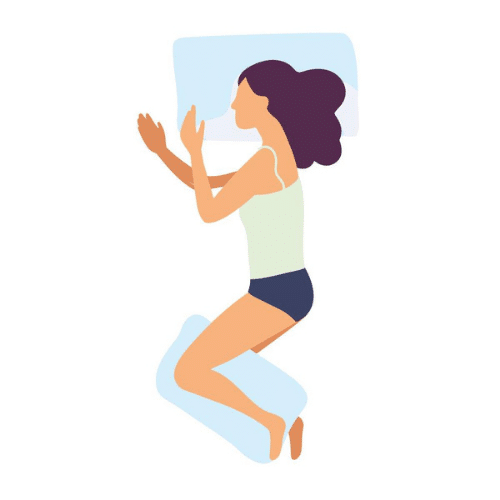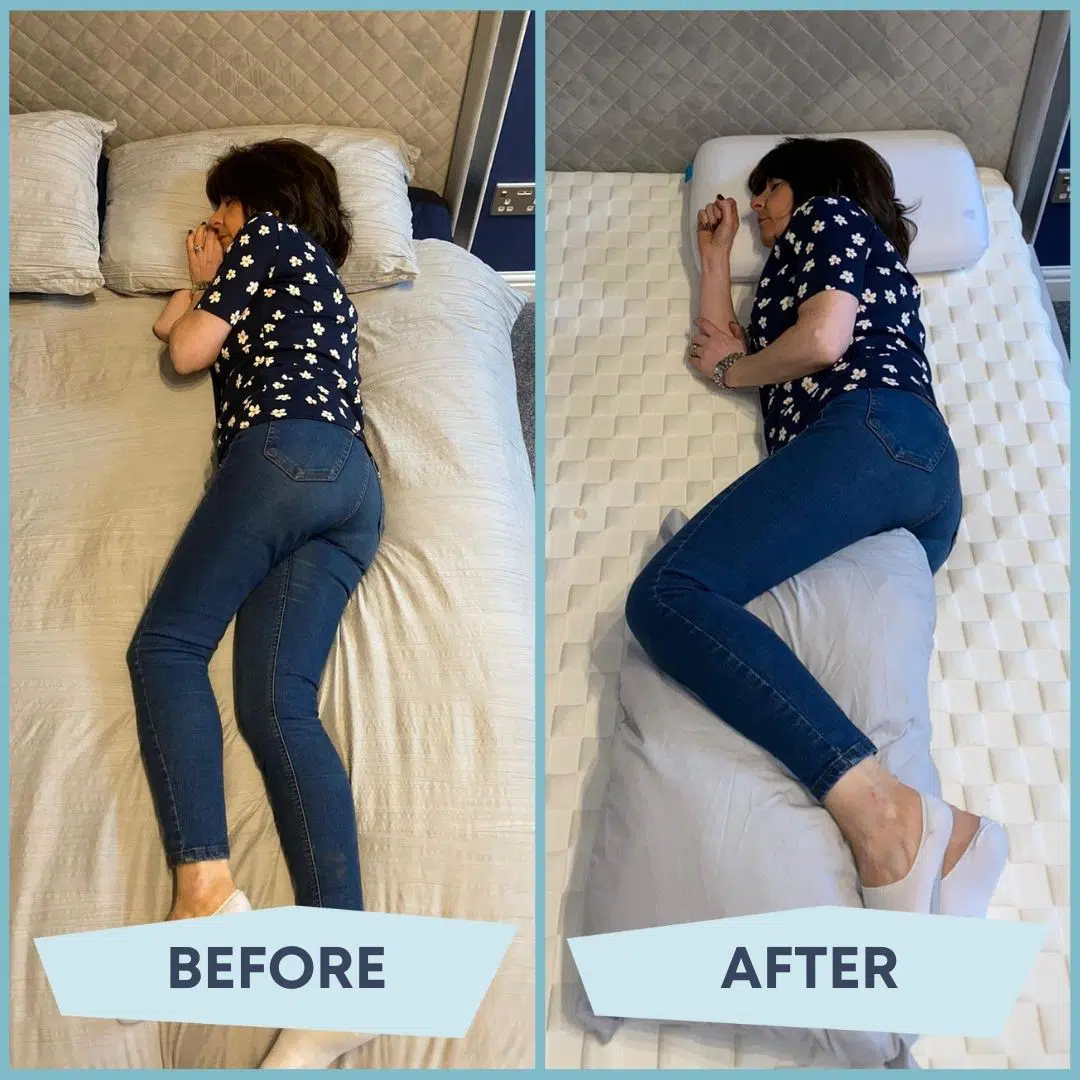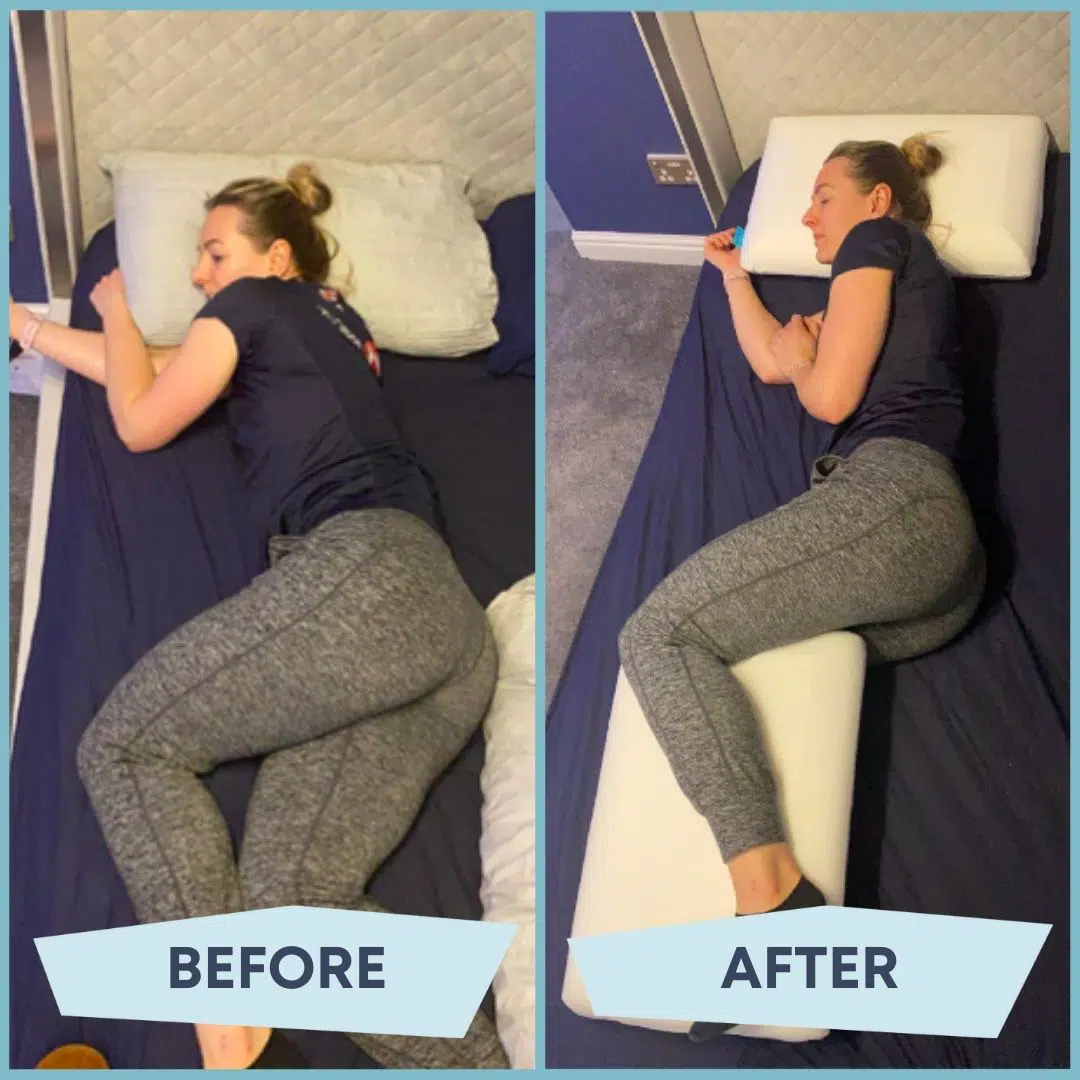Blog
The best sleeping position for good posture
You strain your neck all day. Look down at your phone, laptop, or even cutting board while making dinner.
Obviously, your posture takes a hit, and your spine comes at a cost.
good news? You can use the time you sleep to help combat poor posture throughout the day.
Maintaining good posture at night has many benefits. From reducing back and neck pain, by reducing shoulder tension and improving blood circulation, all the way to reducing snoring and improving lung capacity.
The real question is, how do you implement it?
The first step in getting a good sleeping position is positioning your body correctly. While you may move at night, if your sleeping position is optimized, you can set yourself up pretty well. And you may find that you also don't move as much as you thought.
evidence
Since the late 80's, Arrontop's sleep experts have fully proven that the semi-fetal side lying is the best position for a neutral spine.
A neutral resting spine is a key component of good sleeping posture. When your spine is in a neutral position, it is also straight. This means the muscles around it don't have to work, but instead have a chance to recover and rest. Think of it as giving your spine a chance to get a good night's sleep.
Best Position: Sleeping on Your Side
What is a half-fetus lying on your side, you ask? Well, it looks like this:

Let's break it down. As you can see from the pictures, lying on your side is not the only box you have to tick to optimize your sleeping position.
the right pillow
The key step is choosing the right pillow for your head.
Do you have a clear choice? Memory foam - it's best for you. As the name suggests, memory foam can remember the pressure of your optimal head and cervical vertebrae on the pillow. When you fall asleep most comfortably, this position just supports your cervical vertebrae. No matter you turn slightly or make a big turn, the memory foam will remember you to fall asleep comfortably. all poses. And it stays on all night. This is what the material of memory foam can do, and what other pillows can't do. So, while it is great for reducing stress and improving sleep.
The perfect pillow to help you with this will also take into account your posture.
Posture-friendly pillows are those that perfectly fill the space between the earlobes and the mattress, helping to maintain natural and reasonable support for the head and neck and preventing neck pain in the morning.
Although everyone's body size and height are different, the Arrontop Memory Foam Pillow is strictly ergonomically designed, and the Arrontop Cervical Pillow with high density and slow rebound characteristics meets all of these requirements.
Add a second pillow
It is also recommended that you sleep with a second pillow between your knees and ankles (if you can't use a pillow, tuck up part of the duvet).
Why?
A second pillow helps keep your hips neutral by preventing your legs from crossing.
See the sample photo below. Even if you've slept next to you, chances are you're a photo from before. These three simple adjustments turn before (bad sleep position) into after (good sleep position).


We have a neutral spine (due to sleeping on our side), a neutral neck (due to the right pillow) and a neutral hip (due to a second pillow).
Three Steps to Positioning Yourself in the Best Sleep Position
Let's summarize.
The three steps to getting the best sleeping position for good posture are:
1.Put yourself aside (whichever you prefer, although we recommend alternating)
2.For your head, choose a pillow that fills the space between your earlobes and the mattress. You don't want your neck to be too high or too low, so pay attention to pillows of different sizes. Arrontop fits the bill.
3.Make sure to place a second pillow between your knees and ankles (the folded part of the duvet will work too)

Memory foam pillows, a sleeping position cheat sheet that ensures good posture, and your spine and neck will thank you.
Save it, memorize it, and refer to it later. You'll thank yourself in the morning, once you wake up from a night of posture-optimized sleep feeling rested and free from neck or back pain.
However, you can also make sure that the time you sleep is the time your body actually spends resting and recovering, rather than being twisted into the comical poses you're painfully paying for in the morning.
